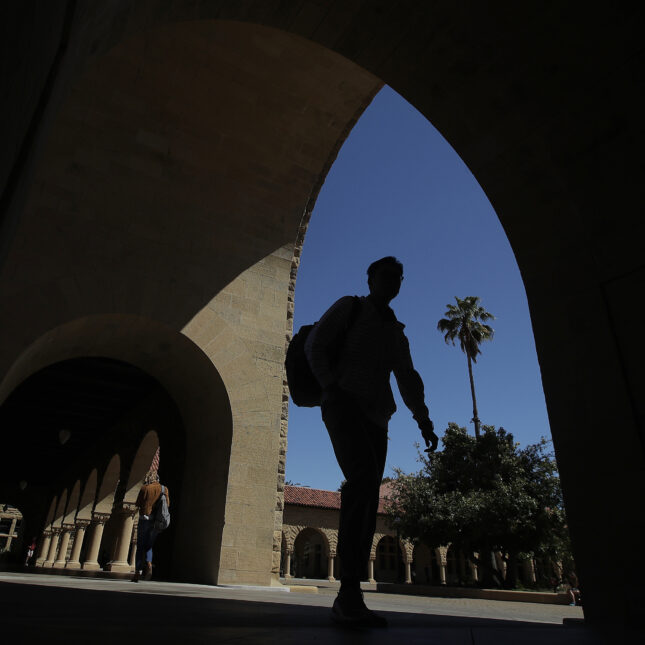
An investigation by a special committee of Stanford’s board of trustees into alleged scientific misconduct by Marc Tessier-Lavigne, the university’s president and a prominent neuroscientist, has involved “hundreds of hours of meetings and witness interviews” and will be “substantially complete” by mid-July, the panel said Sunday.
The announcement, which was posted on the committee’s website, is the first update since February concerning an ongoing probe into concerns raised by the Stanford Daily, the student newspaper, and data experts around studies co-authored by Tessier-Lavigne. As a result of these concerns, the university’s board of trustees retained a former federal judge and the law firm Kirkland & Ellis to lead an investigation, aided by an outside panel of five leading scientists.
“Given the resources devoted to this matter and the Scientific Panel’s progress to date, the Special Committee of the Board believes the Scientific Panel’s work will be substantially complete by mid-July of this year,” said Carol Lam, a member of Stanford’s board and chair of the special committee, in the online statement. “Kirkland & Ellis will then share the results of its review and the Scientific Panel’s evaluation with the Special Committee of the Board and Stanford’s Board of Trustees, which will ultimately be responsible for communicating with the broader Stanford community.”
While Lam’s statement doesn’t say precisely when the committee’s findings will be released publicly, it’s the first time the committee has provided any information about the timing of its review.
The announcement also provided new information about the investigation’s scope, noting that Kirkland & Ellis and the scientific panel have reviewed “more than 26,000 collected documents, including scientific papers and lab data, correspondence, media articles, PubPeer posts, and various other materials, with the assistance of experts in image forensics where needed. Their review has also required hundreds of hours of meetings and witness interviews.”
It’s unclear, however, what documents the committee has reviewed, or who has been interviewed. STAT has confirmed that the committee has spoken with at least two of Tessier-Lavigne’s former postdoctoral researchers, but Lam’s statement suggests a much more expansive investigation into a case that is raising complicated, thorny questions about the conduct of elite science.
The Daily raised concerns around some of Tessier-Lavigne’s past research in late November, identifying several papers that image experts said appeared to contain images that had been duplicated or otherwise manipulated. Some of these issues had been flagged years earlier on PubPeer, a website that allows users to comment on published articles.
Based on these concerns, Jerry Yang, chair of Stanford’s board of trustees, announced in early December that the board was creating a special committee to look into these allegations. The fact that Tessier-Lavigne himself is a member of the board has raised concerns about how impartial this effort can be. The five-person special committee drew further criticism from observers when the Daily noted that one of its members, Felix Baker, maintains a sizable stake in Denali, a company co-founded by Tessier-Lavigne. Following the Daily’s reporting, Baker stepped aside from the committee, a move that a spokesperson told the paper was meant to avoid questions of conflicts of interest.
The committee later announced five prominent scientists would lend their expertise, including a former president of Princeton University, a Nobel laureate, and several members of the National Academies.
The list of flagged studies has grown since the committee was first announced, and now includes at least around a dozen papers. In some cases, Tessier-Lavigne was a middle co-author whose contributions were relatively minor. In other cases, he was the senior author, meaning he supervised the bulk of the published work.
The Daily first reported on a 2008 study co-authored by Tessier-Lavigne and published by the European Molecular Biology Organization Journal. He was a middle co-author in this case, and provided mice used in some of the experiments. On April 26, the journal issued a correction to the study, which corrected some images and retracted others. Elisabeth Bik, an image integrity expert, applauded some of the revisions but said on Twitter that other image issues seemed too substantial to be fixed with a correction alone. All of these images were based on Western blots, a common experiment used to detect the presence of specific proteins in cells.
The most serious allegations surrounding the president revolve around a widely cited 2009 Nature study led by one of Tessier-Lavigne’s postdocs and conducted under his supervision while he was a top scientist at Genentech. Former company employees reportedly told the Daily that the study, which centered around neurodegeneration and raised hopes for understanding and treating Alzheimer’s, contained falsified results and that Tessier-Lavigne tried to keep the issue quiet.
He has forcefully denied these claims and defended a decision to publish follow-up papers that updated and in some cases debunked the 2009 paper’s findings rather than correct or retract the original study.
Genentech launched its own internal investigation of the study, interviewing more than 35 past and present employees and reviewing meeting minutes, emails, and lab notebooks. The company said that while its records aren’t complete, it didn’t find any evidence of fraud or intentional wrongdoing associated with the study. But the findings mentioned a separate and previously unreported misconduct case that in 2010 led to the firing of a different Tessier-Lavigne postdoc.










Exciting news! STAT has moved its comment section to our subscriber-only app, STAT+ Connect. Subscribe to STAT+ today to join the conversation or join us on Twitter, Facebook, LinkedIn, and Threads. Let's stay connected!
To submit a correction request, please visit our Contact Us page.